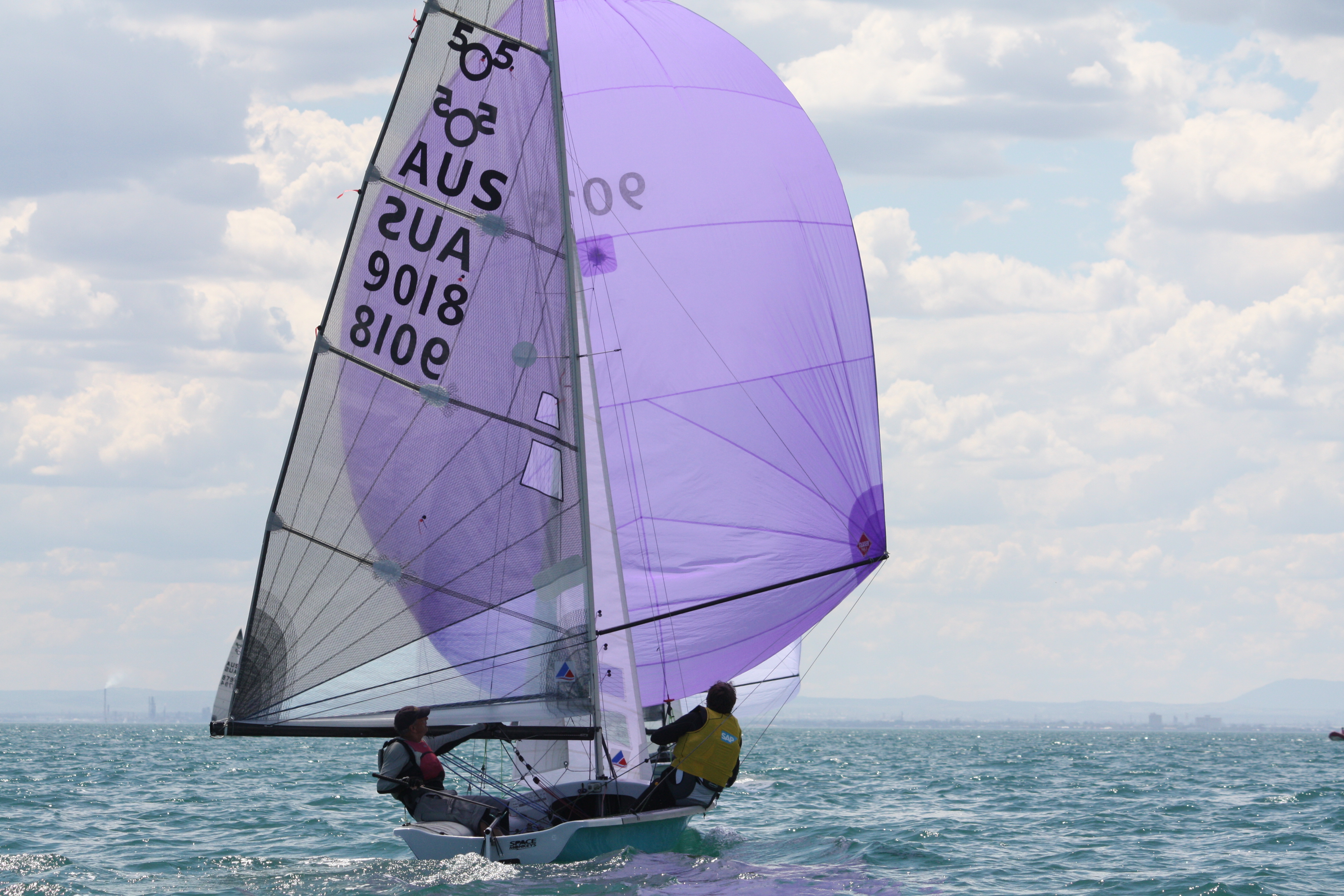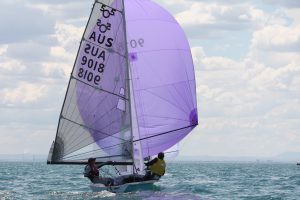

Fine Tune Your Steering – Steering well is an art, and particularly steering well across a wide range of conditions is something that only the best have mastered through countless hours on the water.
Steering Position – Fine Tune Your Steering
It’s important to have a steering position where you can see as much of the sails as possible and when sailing upwind you need to have your head as far outboard and forward as you can while still being able to steer comfortably.
You need to view the luff of the jib upwind and the edge of the spinnaker downwind.
In light airs, the telltales should be your primary focus and it’s imperative to keep them flowing constantly, wind shear (the wind twisting or changing direction vertically) is common in lighter airs and the telltales can behave quite differently as they go up the sail. This is where twist becomes very important so that the telltales all break at the same time for the full length of the sail.
As the wind builds and the boat is moving through the water more easily, we can begin to work more on height and VMG toward the mark. The helmsman can now afford to let the windward telltales lift a little.
In heavier conditions, the helmsman must concentrate on the angle of heel, the flatter the boat the better, and easing the mainsail, lowering the traveller or pulling on the backstay if fitted will depower the boat.
The important point for the helmsman is to keep the water flowing over the foils and not slow the boat by pinching. When a gust strikes many helmsmen feather the boat and then ease the mainsail when the right response is to ease the mainsail in anticipation of the gust, gain speed then trim back on once the gust has passed.
Steering Downwind – Fine Tune Your Steering
Downwind it’s the helmsman’s job to work with the trimmers to keep the spinnaker, whether Symmetrical or asymmetrical, operating at the optimum angle for the best VMG.
It’s common for inexperienced helmsmen to pull away when they see a collapsing spinnaker when in actual fact the sail has collapsed from lack of pressure.
The key to good helming is concentration and focusing on telltales, sail shape and angle of heel. One excellent drill practiced by many top-flight coaches is to get their sailors to either practice without the rudder fitted or to sail the boat with balance and sail trim alone.
What we as sailors need to be always aware of is the fact that excessive rudder movement acts as a brake. The more manoeuvres we can do with a minimum of rudder movement will ensure that the highest possible speed is maintained throughout tacks and gybes and on the course in general.

